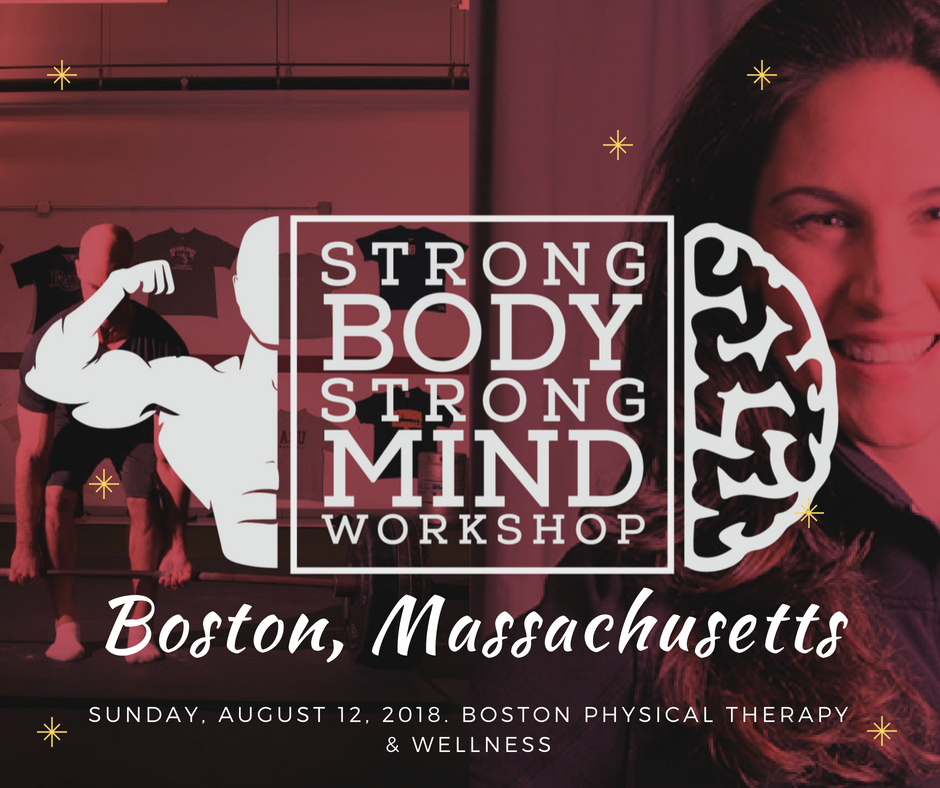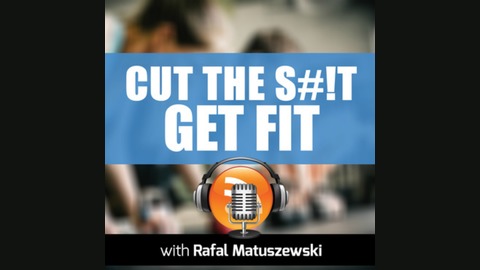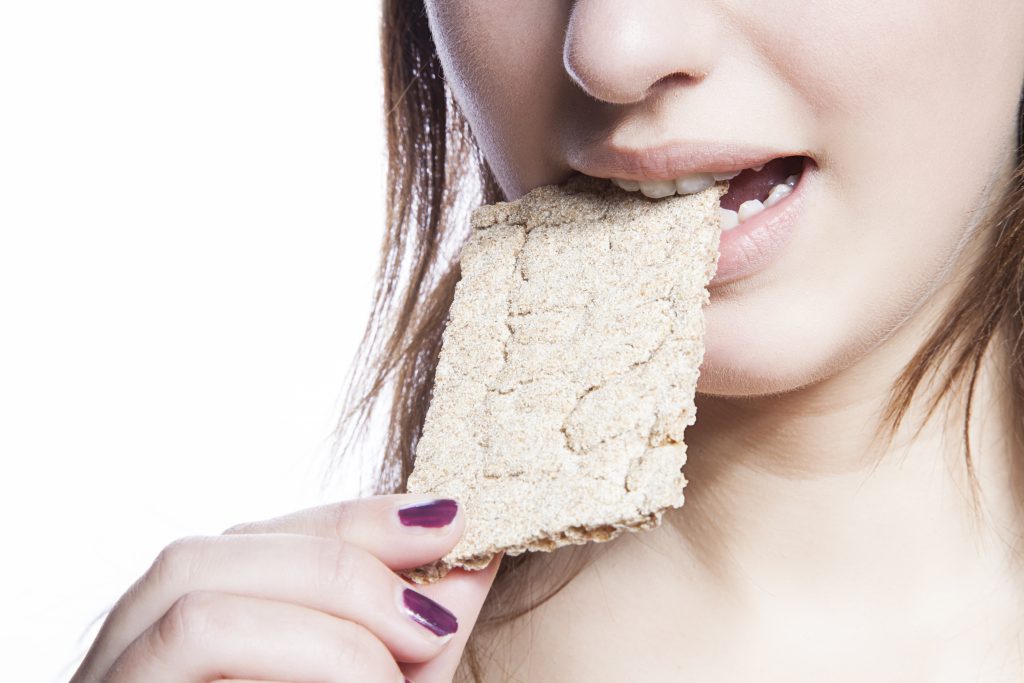Today’s guest post comes courtesy of Registered Dietician and nutrition coach, Georgie Fear. I first “met” Georgie a few years ago when she was a coach for Precision Nutrition, and immediately found her take and approach to nutrition as refreshing and non-dogmatic.
Her new book, Lean Habits For Lifelong Weight Loss, was just released today.
What is a trigger food?
Most people would say that “trigger foods” are foods that they have trouble eating a reasonable portion of. Most commonly, it’s sweets like cookies or chocolate, and sometimes salty, crunchy snacks like potato chips or tortilla chips. If you feel like you have ever lost control while eating and consumed an unreasonable amount, you’re not alone, and you’re not messed up. The unpleasant experience, however, would make any level-headed person think “Gosh, I don’t want to do that again” and look for a way to prevent it.
It’s common to label a food that was involved in an incident such as this as a trigger food, and to be wary of it. If you’ve been bitten by a dog, it’s also normal to be a bit tentative to pet dogs afterward!
When a client refers to something as a “trigger food”, I always want to hear more. Further discussion usually reveals not just one unpleasant interaction, but a rocky ongoing relationship, where the food is like an on-again-off-again romance. They love the taste of the food, but repeatedly buy it, overeat it, and swear it off for a while.
After a while, they inevitably buy it again (either hoping it will end differently this time, or already accepting that overeating it is the plan) and go through the cycle again.
Break The Cycle: 3 parts
Three things will help you turn a trigger food into just a food you like. First, let’s clarify who’s in charge here. You. Not the food.
Is it hard to stop eating that food after one serving? Heck yeah, I will never say it is or should be easy. But difficulty need not be confused with impossibility.
You may have felt like you lost control in the past, but that doesn’t mean you did. The food did not jump in your mouth. I realize it can be very difficult to manage strong impulses, but you are never without control. You always have the option to not take another bite. With help and practice, I know you can do this.
Second: Forbidding specific foods rigidly leads to increased cravings for that food1,2.
Most people who do find peace with all foods only are able to do it after they start eating previously-taboo food in a planned, enjoyed, and allowed way. Associating guilt with a particular food, on the other hand, has been found to predict continued weight gain and feelings of helplessness around that food item3.
That doesn’t mean you have to eat your most willpower-challenging dessert with every meal, or every day, but planning to eat it at least every now and then and enjoy it mindfully is important.
Note from TG: ice-cream (and carrot cake).
Sometimes, people wonder if they have a physical addiction to that particular food, food in general, or sugar. Most contemplate that maybe, like an alcoholic, they would be best off abstaining.
Rest assured, you have options besides a.) keep the cycle going and b.) kiss the food goodbye for good. Here’s how you can choose c.) turn it into just another food that you can choose to eat or not, in whatever portion you choose.
Third: Start collecting experiences where you successfully eat your former trigger foods in a way that leaves you feeling good. Every time you prove to yourself that eating this food does not automatically result in an overeating experience, you’ll gain more confidence.
I know it can be a daunting or even frightening task to deliberately eat a food you have previously struggled with managing, so here are tips on ensuring a good experience.
Remember that your eating behaviors are significantly impacted by your expectations, including how strongly you believe you will lose control when eating4.
If you expect to lose control and be unable to stop after one cookie, you are more likely to have that happen. If you expect that once you eat your chosen portion of frozen yogurt, you’ll head to the park with your spouse for a walk, you have a better chance of making that happen.
Instead, think in small steps, and realize that not every situation is equally triggering, so you can start with easier scenarios. The physical environment, company, time of day, even the brightness of the lighting and whether it’s the weekend or not can impact how much you eat5.
It’s not about the food itself.
Let’s say potato chips have been a “trigger food” for you before (see what I did there, past tense because you’re leaving it behind and not believing in trigger foods anymore). It’s incredibly tough to eat a single portion of chips if you are stuck in a car, as the passenger, on a 12 hour drive across the midwest with nothing to do and a 2 pounds bag of Lays in your lap. That’s a perfect storm of challenge-increasing factors.
But, let’s say it’s 5 am, and you stop at a convenience store, half asleep, on your way to work. You have a slightly queasy “got up too early” stomach, and someone offers you a bag of potato chips with your coffee. They aren’t your favorite flavor. And they’re expired. You might not want ANY chips in those circumstances, and if you did get a single serving bag and eat it, the odds of driving back to the store in a chip-possessed maniacal fashion to buy and eat more are (I’m guessing here) slim.
To use an even MORE over the top illustration, if you were eating the food you used to think of as trigger food and the phone rang and your mother was in the hospital and you needed to come right now, would you be able to stop eating the food?
Gosh I hope so.
Everyone is different, but in general, eating excessive portions is harder to resist if we are home, alone, emotional, have a large quantity of the food in front of us, it’s later in the day, it’s a weekend, we have nowhere to go, and are stressed or upset5–7.
Ladies, throw in PMS. When you are working on reclaiming control over a food, you want as few of these factors increasing the challenge as possible. Make it as easy as you can for yourself to succeed! That means you may want to have company, be outside the house, only have immediate access to a single serving, on a day you’re feeling pretty good, and know after you have your treat you’ll be doing something else.
Start at the maximally supported situation you can think of, and get a few exposures to that food with success. Prove to yourself it is possible.
A typical one my clients use is going out with a friend or significant other to buy one single portion of the food, and then having something else planned to do. Popping gum in your mouth can help even more to move on from the taste.
Then, consider if you want to move along the spectrum and open up the flexibility of your eating that food. There’s no end point you “have to” or “should” reach. If you find it’s easy to avoid overeating certain foods by not keeping them in your house, or by only buying single serve portions – great! Use that knowledge to help yourself succeed.
Many people find that they quickly build confidence and soon don’t need the company with them or can bring the food home and be totally fine with it. Awesome!!
It’s also okay to decide to not bring a food home for the long term if it’s too difficult. There is no “I can keep every junk food imaginable in my house and resist it” merit badge.
If you choose to make certain foods “out of the house” foods, it’s not because you “can’t” but because it’s easier to eat it in the manner you enjoy if you choose to have it in a different setting. That’s not making a rule, it’s making a wise choice.
My husband Roland and I don’t keep cookies at home, because if we want a cookie, it’s easiest for us to eat one cookie if we go buy one cookie. Having cookies around here just makes it an added willpower challenge to not eat them in excess. Not having them around makes it easy to not even think of them.
The relationship you have with a particular food, like so many other things in your life, is one you can choose and make reality. You might choose to set some boundaries, and reserve particular foods for certain circumstances, or eventually feel at ease having any food at any time in any scenario. There is no right or wrong.
For more help in attaining a healthy relationship with food and reaching your leanness goals without ever dieting again, pick up my book Lean Habits for Lifelong Weight Loss and join my free Facebook Group for support. You can also find my latest articles over at AskGeorgie.com.
About the Author
Georgie Fear is a registered dietitian and professional nutrition coach and the author of Lean Habits for Lifelong Weight Loss.
One habit at a time, she teaches clients around the world how to get lean and live better lives through improving their food habits, without suffering or calorie counting.
In her coaching, Georgie draws from her research expertise in appetite regulation and human behavior change to ensure clients are not only well fed physically, but supported emotionally and given autonomy throughout their journey.
She adores teaching, has an analogy for almost everything, and loves to help her clients fall in love with themselves. While she has worked with NCAA teams and Olympic athletes, her favorite type of clients are normal everyday people who are sick of dieting and want to an enjoyable, healthy relationship with food.
Works Cited:
- Massey A, Hill AJ. Dieting and food craving. A descriptive, quasi-prospective study. Appetite. 2012;58(3):781-785. doi:10.1016/j.appet.2012.01.020.
- Meule A, Westenhöfer J, Kübler A. Food cravings mediate the relationship between rigid, but not flexible control of eating behavior and dieting success. Appetite. 2011;57(3):582-584. doi:10.1016/j.appet.2011.07.013.
- Kuijer RG, Boyce J a. Chocolate cake. Guilt or celebration? Associations with healthy eating attitudes, perceived behavioural control, intentions and weight-loss. Appetite. 2014;74:48-54. doi:10.1016/j.appet.2013.11.013.
- Fitzsimmons-Craft EE, Keatts DA, Bardone-Cone AM. Eating Expectancies in Relation to Eating Disorder Recovery. Cognit Ther Res. 2013;37(5):1041-1047. doi:10.1007/s10608-013-9522-7.
- Stroebele N, De Castro JM. Effect of ambience on food intake and food choice. Nutrition. 2004;20(9):821-838. doi:10.1016/j.nut.2004.05.012.
- Rolls BJ, Morris EL, Roe LS. Portion size of food affects energy intake in normal-weight and overweight men and women. Am J Clin Nutr. 2002;76(6):1207-1213. http://ajcn.nutrition.org/content/76/6/1207.short. Accessed April 4, 2015.
- Crowther JH, Sanftner J, Bonifazi DZ, Shepherd KL. The role of daily hassles in binge eating. Int J Eat Disord. 2001;29(4):449-454. doi:10.1002/eat.1041.











